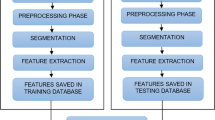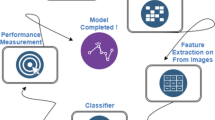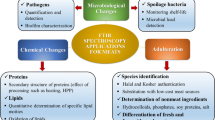Abstract
Consumer trust in fruit industry is partly depended on the labeling of its geographical origin. The accurate label is not only of great significance to consumers and retailers, but also for their brands shaping. This work evaluated the utility of Fourier transform near-infrared spectroscopy (FT-NIRS) in identifying the geographical origins of Chinese pears including Laiyang pear (Pyrus bretschneideri cv. Laiyang), Dangshan pear (Pyrus bretschneideri Rehd. cv. Dangshansuli), and Korla pear (Pyrus sinkiangensis T. T. Yu). FT-NIR spectra of 316 pears from three different geographical origins were obtained in the spectral range of 10,000–4000 cm−1. Preliminary investigation was first conducted based on principal component analysis (PCA) to confirm the similar spectral features of samples within one class, and the results showed that PC1 and PC2 were effective for the identification. Partial least square discriminant analysis (PLS-DA) models based on full spectra indicated that the optimal classification based on second-order derivative (Der2) preprocessed spectra achieved 100% correct classification rates (CCRs) in all datasets. After that, the multivariate selection strategies including two-dimensional correlation spectroscopy (2D-COS), competitive adaptive reweighted sampling (CARS) combined with successive projection algorithm (SPA), and uninformative variable elimination (UVE) combined with SPA were individually optimized for selecting the characteristic wavenumbers from full FT-NIR spectra. On the basis of simplified PLS-DA models establishment, the CCRs in calibration, cross-validation, and prediction sets of the selected CARS-SPA-PLS-DA model achieved 98.58%, 98.11%, and 98.08%, respectively. This research demonstrated that FT-NIRS combined with multivariate analysis can be successfully employed to identify the geographical origins of Chinese pears.







Similar content being viewed by others
References
Y. Huang, J. Xiong, X. Jiang, K. Chen, D. Hu, Assessment of firmness and soluble solids content of peaches by spatially resolved spectroscopy with a spectral difference technique. Comput. Electron. Agric. 200, 107212 (2022)
M. de Wit, P. Nel, G. Osthoff, M.T. Labuschagne, The effect of variety and location on cactus pear (Opuntia ficus-indica) fruit quality. Plant Foods Hum. Nutr. 5, 136–145 (2010)
D. Liu, E. Wang, G. Wang, G. Ma, Nondestructive determination of soluble solids content, firmness, and moisture content of “Longxiang” pears during maturation using near-infrared spectroscopy. J. Food Process. Preserv. 46(3), e16332 (2022)
J. Li, Q. Zhang, Y. Cui, J. Yan, J. Cao, Y. Zhao, W. Jiang, Use of UV-C treatment to inhibit the microbial growth and maintain the quality of Yali pear. J. Food Sci. 75(7), M503–M507 (2010)
Y. Yu, Q. Zhang, J. Huang, J. Zhu, J. Liu, Nondestructive determination of SSC in Korla fragrant pear using a portable near-infrared spectroscopy system. Infrared Phys. Technol. 116, 103785 (2021)
R. Liu, T. Lai, Y. Xu, S. Tian, Changes in physiology and quality of Laiyang pear in long time storage. Sci. Hortic. 150, 31–36 (2013)
S. Li, X. Su, M. Abdullah, Y. Sun, G. Li, X. Cheng, Y. Lin, Y. Cai, Q. Jin, Effects of different pollens on primary metabolism and lignin biosynthesis in pear. Int. J. Mol. Sci. 19(8), 2273 (2018)
S. Kelly, K. Heaton, J. Hoogewerff, Tracing the geographical origin of food: the application of multi-element and multi-isotope analysis. Trends Food Sci. Technol. 16(12), 555–567 (2005)
G. Campmajó, L.R. Rodríguez-Javier, J. Saurina, O. Núñez, Assessment of paprika geographical origin fraud by high-performance liquid chromatography with fluorescence detection (HPLC-FLD) fingerprinting. Food Chem. 352, 129397 (2021)
H.J. Chien, Y.F. Zheng, W.C. Wang, C.Y. Kuo, Y.M. Hsu, C.C. Lai, Determination of adulteration, geographical origins, and species of food by mass spectrometry. Mass Spectrom. Rev. 42, 2273–2323 (2022)
W. Jia, G. Liang, Z. Jiang, J. Wang, Advances in electronic nose development for application to agricultural products. Food Anal. Methods 12, 2226–2240 (2019)
J. Chen, Z. Wang, J. Wu, Q. Wang, X. Hu, Chemical compositional characterization of eight pear cultivars grown in China. Food Chem. 104(1), 268–275 (2007)
C. Ni, Z. Li, X. Zhang, X. Sun, Y. Huang, L. Zhao, T. Zhu, D. Wang, Online sorting of the film on cotton based on deep learning and hyperspectral imaging. IEEE Access 8, 93028–93038 (2020)
S. Lohumi, S. Lee, H. Lee, B.K. Cho, A review of vibrational spectroscopic techniques for the detection of food authenticity and adulteration. Trends Food Sci. Technol. 46(1), 85–98 (2015)
Y. Huang, R. Lu, K. Chen, Detection of internal defect of apples by a multichannel Vis/NIR spectroscopic system. Postharvest Biol. Technol. 161, 111065 (2020)
W. Si, J. Xiong, Y. Huang, X. Jiang, D. Hu, Quality assessment of fruits and vegetables based on spatially resolved spectroscopy: a review. Foods 11(9), 1198 (2022)
X. Tian, Q. Wang, J. Li, F. Peng, W. Huang, Non-destructive prediction of soluble solids content of pear based on fruit surface feature classification and multivariate regression analysis. Infrared Phys. Technol. 92, 336–344 (2018)
F. Wang, C. Zhao, G. Yang, Development of a non-destructive method for detection of the juiciness of pear via VIS/NIR spectroscopy combined with chemometric methods. Foods 9(12), 1778 (2020)
R. Khodabakhshian, B. Emadi, Application of Vis/SNIR hyperspectral imaging in ripeness classification of pear. Int. J. Food Prop. 20(sup3), S3149–S3163 (2017)
S. Lohumi, C. Mo, J.S. Kang, S.J. Hong, B.K. Cho, Nondestructive evaluation for the viability of watermelon (Citrullus lanatus) seeds using fourier transform near infrared spectroscopy. J. Biosyst. Eng. 38(4), 312–317 (2013)
B. Gaspardo, S. Del Zotto, E. Torelli, S.R. Cividino, G. Firrao, G. Della Riccia, B. Stefanon, A rapid method for detection of fumonisins B1 and B2 in corn meal using Fourier transform near infrared (FT-NIR) spectroscopy implemented with integrating sphere. Food Chem. 135(3), 1608–1612 (2012)
L.E. Rodriguez-Saona, F.S. Fry, M.A. McLaughlin, E.M. Calvey, Rapid analysis of sugars in fruit juices by FT-NIR spectroscopy. Carbohydr. Res. 336(1), 63–74 (2001)
S. Parrini, A. Acciaioli, A. Crovetti, R. Bozzi, Use of FT-NIRS for determination of chemical components and nutritional value of natural pasture. Ital. J. Anim. Sci. 17(1), 87–91 (2018)
H. Jiang, W. Zhu, Determination of pear internal quality attributes by Fourier transform near infrared (FT-NIR) spectroscopy and multivariate analysis. Food Anal. Methods 6(2), 569–577 (2013)
Y. Ying, Y. Liu, Nondestructive measurement of internal quality in pear using genetic algorithms and FT-NIR spectroscopy. J. Food Eng. 84(2), 206–213 (2008)
D. Schütz, J. Riedl, E. Achten, M. Fischer, Fourier-transform near-infrared spectroscopy as a fast screening tool for the verification of the geographical origin of grain maize (Zea mays L.). Food Control 136, 108892 (2022)
W. Yuan, H. Jiang, M. Sun, Y. Zhou, C. Zhang, H. Zhou, Geographical origin identification of chinese tomatoes using long-wave fourier-transform near-infrared spectroscopy combined with deep learning methods. Food Anal. Methods 16, 664–676 (2023)
G. Ren, S. Wang, J. Ning, R. Xu, Y. Wang, Z. Xing, X. Wang, Z. Zhang, Quantitative analysis and geographical traceability of black tea using Fourier transform near-infrared spectroscopy (FT-NIRS). Food Res. Int. 53(2), 822–826 (2013)
X. Duan, D. Zhang, L. Nie, H. Zang, Rapid discrimination of geographical origin and evaluation of antioxidant activity of Salvia miltiorrhiza var. alba by Fourier transform near infrared spectroscopy. Spectrochim. Acta Part A Mol. Biomol. Spectrosc. 122, 751–757 (2014)
H. Jiang, X. Jiang, Y. Ru, Q. Chen, L. Xu, H. Zhou, Sweetness detection and grading of peaches and nectarines by combining short-and long-wave Fourier-transform near-infrared spectroscopy. Anal. Lett. 54(7), 1125–1144 (2020)
J.M. Amigo, I. Martí, A. Gowen, Hyperspectral imaging and chemometrics: a perfect combination for the analysis of food structure, composition and quality, in Data Handling in Science and Technology, vol. 28 (Elsevier, 2013), pp. 343–370
D. Granato, J.S. Santos, G.B. Escher, B.L. Ferreira, R.M. Maggio, Use of principal component analysis (PCA) and hierarchical cluster analysis (HCA) for multivariate association between bioactive compounds and functional properties in foods: A critical perspective. Trends Food Sci. Technol. 72, 83–90 (2018)
M. Barker, W. Rayens, Partial least squares for discrimination. J. Chemom. 17, 166–173 (2003)
A. Nardecchia, R. Presutto, R. Bucci, F. Marini, A. Biancolillo, Authentication of the geographical origin of “Vallerano” chestnut by near infrared spectroscopy coupled with chemometrics. Food Anal. Methods 13(9), 1782–1790 (2020)
H. Jiang, X. Jiang, Y. Ru, Q. Chen, X. Li, L. Xu, H. Zhou, M. Shi, Rapid and non-destructive detection of natural mildew degree of postharvest Camellia oleifera fruit based on hyperspectral imaging. Infrared Phys. Technol. 123, 104169 (2022)
H. Jiang, W. Yuan, Y. Ru, Q. Chen, J. Wang, H. Zhou, Feasibility of identifying the authenticity of fresh and cooked mutton kebabs using visible and near-infrared hyperspectral imaging. Spectrochim. Acta Part A Mol. Biomol. Spectrosc. 282, 121689 (2022)
I. Noda, Generalized two-dimensional correlation method applicable to infrared, Raman, and other types of spectroscopy. Appl. Spectrosc. 47(9), 1329–1336 (1993)
J. Wu, M. Zareef, Q. Chen, Q. Ouyang, Application of visible-near infrared spectroscopy in tandem with multivariate analysis for the rapid evaluation of matcha physicochemical indicators. Food Chem. 421, 136185 (2023)
H. Li, Y. Liang, Q. Xu, D. Cao, Key wavelengths screening using competitive adaptive reweighted sampling method for multivariate calibration. Anal. Chim. Acta 648(1), 77–84 (2009)
V. Centner, D.L. Massart, O.E. de Noord, S. de Jong, B.M. Vandeginste, C. Sterna, Elimination of uninformative variables for multivariate calibration. Anal. Chem. 68, 3851–3858 (1996)
M.C.U. Araujo, T.C.B. Saldanha, R.K.H. Galvao, T. Yoneyama, H.C. Chame, V. Visani, The successive projections algorithm for variable selection in spectroscopic multicomponent analysis. Chemom. Intell. Lab. Syst. 57(2), 65–73 (2001)
A.C. Dotto, R.S.D. Dalmolin, S. Grunwald, A. ten Caten, W.P. Filho, Two preprocessing techniques to reduce model covariables in soil property predictions by Vis-NIR spectroscopy. Soil Tillage Res. 172, 59–68 (2017)
P. Mishra, D.N. Rutledge, J.M. Roger, K. Wali, H.A. Khan, Chemometric pre-processing can negatively affect the performance of near-infrared spectroscopy models for fruit quality prediction. Talanta 229, 122303 (2021)
T. Fawcett, An introduction to ROC analysis. Pattern Recogn. Lett. 27(8), 861–874 (2006)
A.C. Galvis-Sánchez, J.A. Lopes, I. Delgadillo, A.O. Rangel, Fourier transform near-infrared spectroscopy application for sea salt quality evaluation. J. Agric. Food Chem. 59(20), 11109–11116 (2011)
W. Guo, J. Gu, D. Liu, L. Shang, Peach variety identification using near-infrared diffuse reflectance spectroscopy. Comput. Electron. Agric. 123, 297–303 (2016)
S. Sunoj, C. Igathinathane, R. Visvanathan, Nondestructive determination of cocoa bean quality using FT-NIR spectroscopy. Comput. Electron. Agric. 124, 234–242 (2016)
M.D.G. Neves, R.J. Poppi, M.C. Breitkreitz, Authentication of plant-based protein powders and classification of adulterants as whey, soy protein, and wheat using FT-NIR in tandem with OC-PLS and PLS-DA models. Food Control 132, 108489 (2022)
S. Tripathi, H.N. Mishra, A rapid FT-NIR method for estimation of aflatoxin B1 in red chili powder. Food Control 20(9), 840–846 (2009)
F. Dong, J. Hao, R. Luo, Z. Zhang, S. Wang, K. Wu, M. Liu, Identification of the proximate geographical origin of wolfberries by two-dimensional correlation spectroscopy combined with deep learning. Comput. Electron. Agric. 198, 107027 (2022)
Funding
This work was supported by National Natural Science Foundation of China [Grant Number 32102071], and China Postdocotral Science Foundation [Grant Number 2023M741724].
Author information
Authors and Affiliations
Contributions
HJ: Methodology, Data curation, Investigation, Validation, Funding acquisition, Writing—original draft. CZ: Conceptualization, Visualization. WY: Supervision, Project administration. YZ: Data curation, Software, Formal analysis. XJ: Methodology. HZ: Conceptualization, Writing—review and editing.
Corresponding author
Ethics declarations
Conflict of interest
The authors declare no conflict of interest.
Additional information
Publisher's Note
Springer Nature remains neutral with regard to jurisdictional claims in published maps and institutional affiliations.
Rights and permissions
Springer Nature or its licensor (e.g. a society or other partner) holds exclusive rights to this article under a publishing agreement with the author(s) or other rightsholder(s); author self-archiving of the accepted manuscript version of this article is solely governed by the terms of such publishing agreement and applicable law.
About this article
Cite this article
Jiang, H., Zhang, C., Yuan, W. et al. The utility of Fourier transform near-infrared spectroscopy to identify geographical origins of Chinese pears. Food Measure 18, 2674–2684 (2024). https://doi.org/10.1007/s11694-023-02346-0
Received:
Accepted:
Published:
Issue Date:
DOI: https://doi.org/10.1007/s11694-023-02346-0




